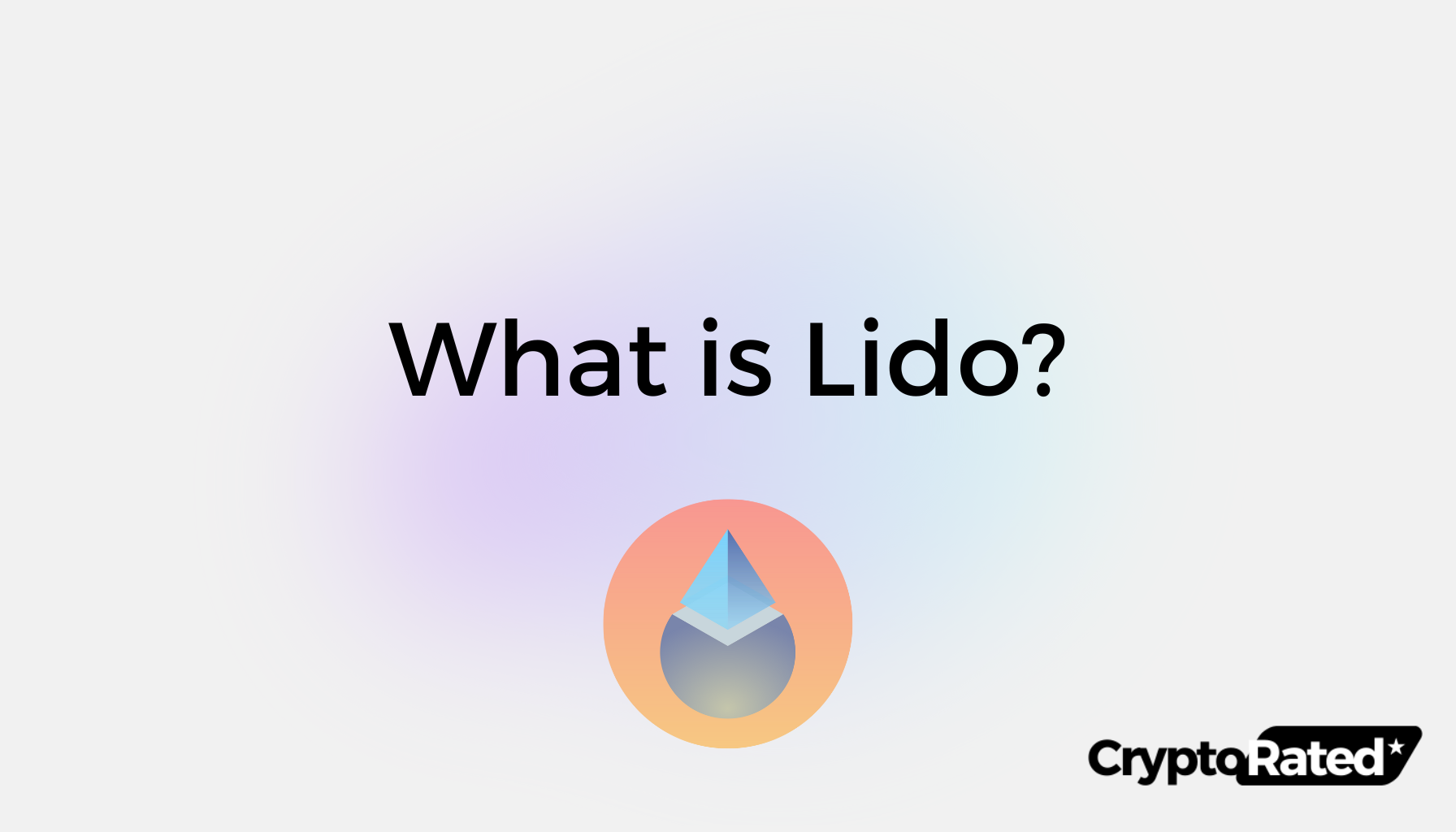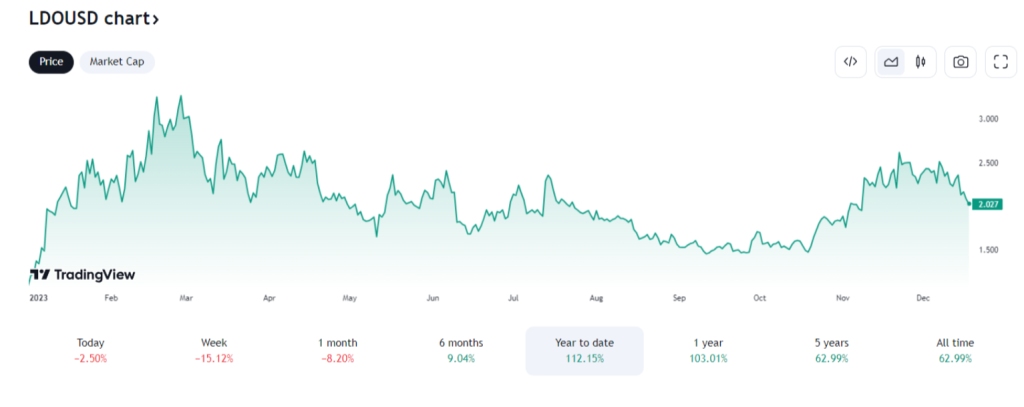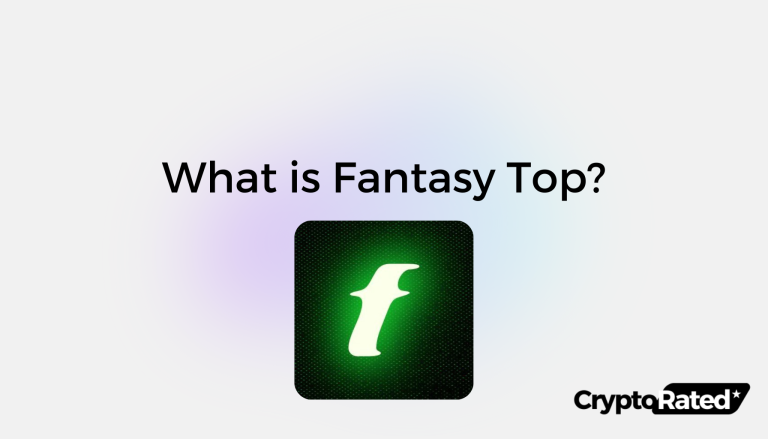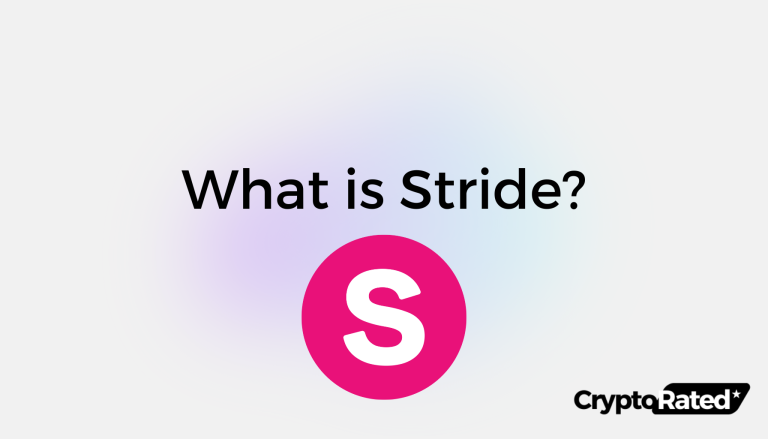
What Is Lido DAO (LDO)?
Lido DAO is a liquid staking solution for Proof-of-Stake (PoS) blockchains. It allows users to stake their tokens without locking them up, which means they can still use and trade them while earning rewards. This makes Lido a more accessible and flexible way to participate in PoS networks.
Lido works by creating liquid-staked representations of tokens (LSRs). These LSRs can be traded on decentralized exchanges like Uniswap and SushiSwap, just like regular tokens. Lido is a popular way to stake Ethereum, and it is also supported by other PoS chains such as Solana and Polkadot.
Key Takeaways
- Lido provides an alternative to traditional PoS staking through its liquid staking solution.
- Lido’s solution enhances the liquidity of staked tokens, making staking more accessible to its users.
- Lido (LDO) offers an opportunity for users to earn rewards while maintaining asset liquidity.
What Is The History of Lido DAO (LDO)?
Lido is a decentralized finance (DeFi) protocol that allows users to stake their Ethereum (ETH) tokens and earn rewards without having to lock them up. This makes it a more flexible and accessible way to participate in the Ethereum network.
Lido was founded in 20211 by an anonymous group of developers who were frustrated with the limitations of existing staking solutions. The protocol was launched in beta in September 2021 and quickly gained popularity. By the end of 2021, Lido had over 32 million ETH staked, making it the largest staking provider on Ethereum. Try our crypto staking calculator
In January 2022, Lido released its governance token, LDO2. This token gives holders voting power over the protocol and also provides access to other benefits, such as discounts on transaction fees.
As of October 2022, Lido has over 100 million LDO staked, making it the largest DeFi protocol by value. The protocol has also generated over $1 billion in rewards for its users.
Here are some of the key milestones in Lido’s history:
- September 2021: Lido launches in beta.
- December 2021: Lido has over 32 million ETH staked.
- January 2022: Lido releases its governance token, LDO.
- October 2022: Lido has over 100 million LDO staked.
Some of the key figures in Lido’s history include:
- An anonymous group of developers: The founders of Lido remain anonymous, but they are credited with developing the protocol and bringing it to market.
- Stefano De Nardis: De Nardis is the CEO of Rocket Pool, a company that provides infrastructure for Lido.
- Anthony Sassano: Sassano is a popular DeFi influencer and commentator who has been a vocal supporter of Lido3.
How Does Lido DAO Work?
Lido is a liquid staking solution that allows users to stake any proof-of-stake assets in exchange for block rewards. This effectively lowers the barriers to entry and the costs associated with locking up one’s assets in a single protocol.
Lido is essentially a staking pool smart contract that manages users’ withdrawals and deposits, delegates the protocol’s pooled funds to node operators, determines staking reward fees, mints and burns tokens, and possesses a full list of node operators, validation keys, and records of reward distribution4.
Lido makes staking on Ethereum more accessible by allowing users to stake fractions of Ether to earn block rewards. Users receive stETH, an ERC-20 compatible token, for staking on Lido5. The stETH tokens are minted as soon as funds are deposited into Lido’s staking pool smart contract and burned as soon as users withdraw their ETH tokens.
The ETH staked on the protocol is distributed to the Lido network’s validators (node operators) and deposited to Ethereum’s mainnet (the Ethereum Beacon Chain) for validation. The funds are effectively locked and secured in a smart contract where validators cannot access them.
The ETH that users have deposited via Lido staking is then divided into sets of 32 ETH among active node operators on the Lido network. These operators use a public validation key to validate transactions involving users’ staked assets. Through this mechanism, the network can distribute users’ staked assets across multiple validators, effectively eliminating risks associated with a single point of failure and single validator staking.
How Does Lido DAO Work On Different Blockchains?
Lido (LDO) is a liquid staking solution for proof-of-stake (PoS) cryptocurrencies. It supports post-Ethereum Merge consensus layer (formerly Ethereum 2.0) staking, as well as other PoS blockchains. Here are the details of Lido’s support for staking on various PoS blockchains:
| Blockchain | How Lido Works | Benefits |
|---|---|---|
| ETH | Lido pools ETH staked from multiple users and selects nodes with proven track records to validate transactions. Users receive stETH in exchange for their ETH, which can be traded or used in DeFi protocols. | Simplified staking, DeFi integrations, instant liquidity. |
| SOL | Lido allows users to stake SOL tokens in exchange for stSOL, which can be traded or used as collateral in DeFi protocols. | Simplified staking, DeFi integrations, instant liquidity. |
| MATIC | Lido enables users to stake MATIC tokens on Ethereum and receive stMATIC in return. Stakers can earn rewards and utilize their stMATIC holdings on other DeFi protocols. | Simplified staking, instant liquidity, and utilization across Kusama and Moonriver ecosystems. |
| DOT | Lido for Polkadot allows users to earn rewards and utilize stDOT tokens while their staked DOT tokens are locked on the protocol. An asset-growing mechanism increases the network’s pooled assets. | Simplified staking, instant liquidity, asset-growing mechanism. |
| KSM | Lido enables users to stake KSM and receive stKSM, which grants daily staking rewards and utilization across Kusama and Moonriver ecosystems. | Simplified staking, instant liquidity, and utilization across Kusama and Moonriver ecosystems. |
How Has Lido DAO (LDO) Traded In 2023, And What Is The Lido Price Prediction?
Lido Dao (LDO) has seen its price spike by over 100% in the past year, keeping pace with $ETH. This year’s returns have allowed LDO to recover a considerable chunk of the losses it suffered during the 2022 bear market, but it still trades at a 70% discount from its all-time high.
Changelly6 expects LDO to trade relatively flat for the rest of 2023 and 2024. They forecast LDO to return over 150% in 2025 as the price closes in on $3. They believe a new all-time high could be reached as early as 2026.
Coincodex is more bullish on LDO; they expect it to trade as high as 10$ in 2024, which would mark a considerable new all-time high. Their long-term price predictions vary between low targets of $3.5 all the way to $18 for the rest of the decade.
Remember that crypto prices are extremely volatile, and you should always do your own research before risking your capital. Nothing in this post should be considered as financial advice.

Final Thoughts on Lido DAO
Lido DAO (LDO) has been hugely successful. The platform is responsible for over 30% of the total staked $ETH, according to CoinGecko7. Using Lido DAO, Ethereum holders are able to benefit from fairly consistent rewards on a platform that has so far demonstrated an impressive level of security. Lido can also be used to stake on other popular blockchains, and the LDO token has largely outperformed the market and other liquid staking options.
Frequently Asked Questions
What Is Lido DAO?
Lido (LDO) is a liquid staking solution for Proof-of-Stake (PoS) blockchains, allowing users to stake their tokens without having to lock them up. This makes it a more accessible and flexible way to participate in PoS networks. Lido also has an on-chain governance mechanism called the LidoDAO, which allows holders to vote on protocol proposals.
How does Lido’s liquid staking enhance liquidity for staked Ethereum?
Lido is a liquid staking platform that allows users to earn staking rewards without locking up their assets. By staking Ethereum with Lido, users receive stake tokens that represent their staked assets. These stake tokens can be traded on decentralized exchanges, providing users with a liquid asset that can be easily bought and sold. This enhances liquidity for staked Ethereum, as users can earn staking rewards while maintaining the flexibility to use their assets as they see fit.
What are the risks associated with using Lido for staking cryptocurrencies?
As with any staking platform, there are risks associated with using Lido. One potential risk is that the platform could be hacked, resulting in the loss of staked assets. Additionally, there is always the risk that the price of the cryptocurrency being staked could decrease, resulting in a loss of value for the staked assets. However, Lido takes measures to mitigate these risks, such as using multi-sig wallets and providing insurance coverage for assets staked on the platform.
WRITTEN
Peter Barker
Peter is an experienced crypto content writer and a DeFi enthusiast with more than 3+ years of experience in the space. Previously a journalist and news editor at a leading European news sourcing agency.




